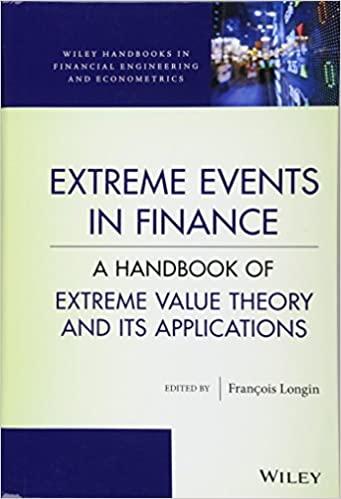Answered step by step
Verified Expert Solution
Question
1 Approved Answer
Topic 1 2 Portfolio Theory Exercise 1 : One Risk free and One risky asset The simplest example is a portfolio containing two assets: a
Topic Portfolio Theory
Exercise : One Risk free and One risky asset
The simplest example is a portfolio containing two assets: a riskfree Treasury bill
and a stock. Assume that the expected return of the Treasury bill is and its risk is
Further, assume that the expected return of the stock is and its standard
deviation is
If the investor allocated to the riskfree asset and to the risky asset:
a Calculate the expected return of the portfolio.
b Calculate the risk of the portfolio.
Exercise : Capital Allocation Line CAL
Assume that the average rate of return on the S&P portfolio is more than the
TBill return and that the S&P standard deviation is per year. Assume that
these values are representative of the expectations of the representative investor
for future performance and that the current TBill rate is
Portfolio Weights in TBills Weights in S&P
a Calculate the expected return and variance of the following portfolios
invested in Tbills and the S&P index with the following weights.
b Given a level of risk aversion, if the investor wanted to reduce his risk level,
what would he have to do in his portfolio composition?
c Calculate the level of risk associated with each portfolio.
d Sketch the CAL.
e If the investor wanted to reduce his risk to how would his portfolio look like?
Exercise : Security Market Line SML
Consider the following table which gives a security analysts expected return on two
stocks for two particular market returns.
Market Return Aggressive Stock A Defensive Stock B
a Calculate the betas of these two stocks.
b What is the expected rate of return on each stock if the market return is
equally likely to be or
c If the TBill rate is and the market return is equally likely to be or
define the CAPM equation.
Step by Step Solution
There are 3 Steps involved in it
Step: 1

Get Instant Access to Expert-Tailored Solutions
See step-by-step solutions with expert insights and AI powered tools for academic success
Step: 2

Step: 3

Ace Your Homework with AI
Get the answers you need in no time with our AI-driven, step-by-step assistance
Get Started


